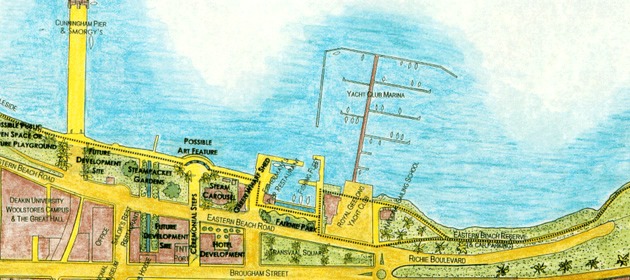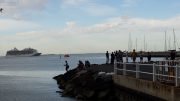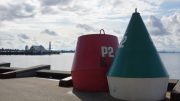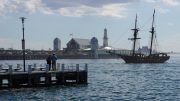By the time the third go at rejuvenating the city and waterfront had come around, quite a bit had happened. The new shopping centres of Market Square and Bay City Plaza had progressed and expanded. The National Wool Museum had opened. Eastern Beach had had a huge major public works project restoring her to her former glory and Geelong had started to get over the doldrums that had shaped it recent years.

So in 1995 the time was right to give the plan another go. The City of Greater Geelong and the Victorian State Government formed a partnership and went about planning what was to be Steampacket Place, transforming the waterfront into the jewel of Geelong.
With a few pegs in the ground from the earlier projects and the purchase of important pieces of land they went about planning a waterfront Geelong could be proud of. This new master plan was made up of key landscape and urban design features combined with attractions, dining and a mix of leisure, business and education.
The plan was carefully staged and one of the first and most impressive redevelopments was of the old wool stores to the west of Cunningham Pier. They were redeveloped and transformed into a state of the art waterfront campus for Deakin University. Hosting their school of Architecture, and administrative centres. They also built one of Australia’s finest concert halls (Costa Hall) and brought some 2000 people on campus.
Cunningham Pier was the next to be transformed. Once a vital part of the Port of Geelong it had stood idle for many years, a huge restaurant giving the town an impressive icon on the bay front soon graced the end of the pier. The entire waterfront then received a huge makeover with some of the country’s best urban design with the introduction of designer furniture, art, Jan Mitchell’s beautiful painted bollards and plenty of lush plantings.
Geelong then got their earlier dream of a transport museum with the Ford Discovery Centre opening in 1999, directly over the road from where Ford Australia opened its operations in Geelong. The nearby Golden Age Hotel was transformed into the vibrant Max Hotel and Sailors Rest, which had been empty and derelict for years, opened as a premier dining location; Geelong finally was going from strength to strength.
The old goods shed on now Steam Packet Place attracted cafes and restaurants with the Wharf Shed and French favourite Le Parisien, to complement the popular Fisherman’s Pier across the road. The Royal Geelong Yacht Club also lost its huge fortress wall and opened up to the street.
Then came some of the country’s best events, sporting events, cultural events, New Year on the Waterfront, the Australia Day festivities and special events like Olympic Torch Run, Commonwealth Games Run and one of the city’s biggest party’s Ford’s 75th Anniversary which attracted well over 2000 vehicles and an estimated 150,000 people.
In 2001 the harbour and historic carousel opened, followed by the Four Points Sheraton, then apartments started springing up. The plan was so successful it moved into the city, with new furniture and street scaping bringing the city to the bay. Moorabool Street was soon transformed from a dreary old street to a vibrant palm lined boulevard.

The waterfront is still growing, with new developments underway, the new Edgewater apartments with new dining opened during 2009. In each direction more high-rise living is being built and Deakin University’s new nursing campus has completed the wool stores transformation from empty building to busy school campus. The city isn’t doing too poorly either, the brand new TAC building is home to 300 new employees and Westfield has nearly doubled in size bringing new shopping to the vibrant city.
Geelong at last has got its rejuvenated waterfront (and what a beauty it got), it has transformed not only its city but the whole way of life in one of Australia’s best cities and there is plenty more plans in place and a new confidence to make Geelong even better.




